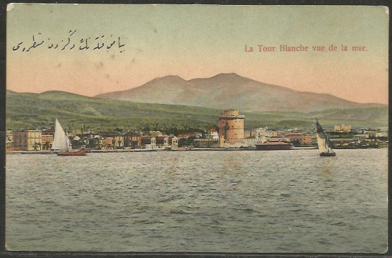CES
24. El buceador (CES)
The opening line recalls of course the famous romance of Silvana that was well known in Salonica, but the rest of the song is totally different. Attias (1972, no. 5) has documented this song with the opening “Se pasea Katina.” However, the recorded version in the Attias collection at NSA (Y 09498/1, performed by his wife Alegra Attias-Alhanati) and the musical transcription in his Cancionero (Attias 1972, pp. 274-275) open “Se pasea la reina.” Armistead and Silverman (1982, pp. 235-239) identified the source of this rare Ladino song in two French traditional songs: L’embarquement de la fille aux chansons and Le plongeur noyé. Interestingly, two motifs in the Ladino song that are not to be found in these French songs seem to come from Greek songs. One is the forty sailors, probably from the Σαράντα παλλικάρια (Forty brave men) theme. In the French song the number of sailors is thirty. The other motif is the theme of casting a lot which falls on the youngest among the sailors (in the Greek ballad το στοιχειωμένο πηγάδι, see Armistead and Silverman, 1982, p. 155). This last motif does not appear in this recording.
This version by CES bears many similarities to Attias’ version and also to another one documented by Bassan (1947, no. 166). Other references to this song, all from Salonica, are Bunis (1999, English part, p. 329, note 87, Se pasea Kadima, probably a misinterpretation of “Katina”) and Havassy (2007, appendix, BSG 040). Attias’ version has a meaningful continuation from which we can infer that the recording of CES is truncated because of the time limitations of the recording medium. In its fuller version, the song develops a plot that recalls, as we have seen, motifs found in romances and other folksongs. In her testimony, Bouena Sarfatty Garfinkle (see Havassy 2007, p. 166) says that the song was associated with the wedding events at the mikveh (ritual bath), an interpretation that makes sense given the central role of the topic of water in the fragment of this song that she remembered. The melody in 6/8 in this recording is quite distinguishable in comparison to the rest of the CES repertoire and corresponds exactly to the recording by Attias. Another version was documented by Kaufman (1993, p. 193-5) from Bulgarian sources and recorded in a commercial arrangement by singer Eva Volitzer (1998, entitled En el río).
Se pasea Silvana
por hermoso vergel,
al bodre del rio,
al agua de la mar.Enfrente de el rio
una barca via,
al bodre del rio,
al agua de la mar.Adientro de la barca
cuarenta marineros
al bodre del rio,
al agua de la mar.Ellos ‘staban cantando
‘na hermosa cantiga,
al bodre del rio,
al agua de la mar.Que hermosa cantiga,
yo la quero ambezar,
al bodre del rio,
al agua de la mar.





